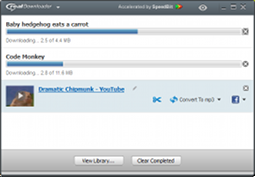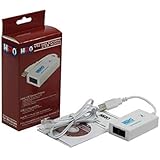Hiro Wireless Usb Adapter Drivers
NETGEAR AC600 Overview. NETGEAR AC600 is a wireless adapter that is very suitable for low spec devices so it is very optimal in working. With AC600 performance (150 Mbps / 433 Mbps) designed with 802.11ac technology Dual Band 2.4 or 5GHz capable of working without limits provides exceptional connection strength. Discuss: HiRO H50193 - network adapter Sign in to comment. Be respectful, keep it civil and stay on topic. We delete comments that violate our policy, which we encourage you to read.Discussion. Discuss: HiRO H50191 - network adapter Sign in to comment. Be respectful, keep it civil and stay on topic. We delete comments that violate our policy, which we encourage you to read.Discussion. Wireless Phones & Devices Wireless phones and devices may be returned within 14 days of purchase. When returning a wireless phone or device with a plan, you are responsible for ensuring that your service is cancelled with the carrier. If you don’t cancel your service, you may incur additional charges from your carrier.
- Hiro Wireless Usb Adapter Driver H50334
- Hiro Wireless Usb Adapter Drivers Windows 7
- Hiro Wireless Usb Adapter Drivers Windows 10
- Hiro Wireless Usb Adapter Driver
Optional Offer for DriverDoc by Solvusoft EULA Privacy Policy Terms Uninstall Exchange server 2013 iso download.
ABOUT SSL CERTIFICATES |
| Hardware Type: | Wireless USB Adapter | |
| Compatibility: | Windows XP, Vista, 7, 8, 10 | |
| Downloads: | 85,087,903 | |
| Download Size: | 3.4 MB | |
| Database Update: | ||
| Available Using DriverDoc: | Download Now | |
Optional Offer for DriverDoc by Solvusoft EULA Privacy Policy Terms Uninstall | ||
This page contains information about installing the latest Wireless USB Adapter driver downloads using the Wireless USB Adapter Driver Update Tool.
Wireless USB Adapter drivers are tiny programs that enable your Wireless USB Adapter hardware to communicate with your operating system software. Maintaining updated Wireless USB Adapter software prevents crashes and maximizes hardware and system performance. Using outdated or corrupt Wireless USB Adapter drivers can cause system errors, crashes, and cause your computer or hardware to fail. Furthermore, installing the wrong Wireless USB Adapter drivers can make these problems even worse.
Recommendation: If you are inexperienced with updating Wireless USB Adapter device drivers manually, we highly recommend downloading the Wireless USB Adapter Driver Utility. This tool will download and update the correct Wireless USB Adapter driver versions automatically, protecting you against installing the wrong Wireless USB Adapter drivers.
If your laptop’s internal Wi-Fi adapter is dead, or just doesn’t have enough power to get the kind of speed you were hoping for, you might want to look into installing a third-party adapter that can boost the signal. Here’s what you need to know.
RELATED:How to Choose a USB Wi-Fi Adapter for Your Laptop
This guide assumes you’ve already picked out an adapter and bought it–so check out our buying guide before coming here to get everything up and running.
 RealPlayer Cloud 2 is a complete solution for all of your media playing needs, and the cloud integration means you can sync across devices, as well. Share the best times. Easily manage and enjoy all of your videos and photos with RealPlayer and RealTimes. RealPlayer The ultimate PC media player to download.
RealPlayer Cloud 2 is a complete solution for all of your media playing needs, and the cloud integration means you can sync across devices, as well. Share the best times. Easily manage and enjoy all of your videos and photos with RealPlayer and RealTimes. RealPlayer The ultimate PC media player to download.
If Windows Has the Drivers
In most cases, Wi-Fi adapters are simply plug-and-play in Windows 10. Windows contains minimal drivers for many devices so you can get online without downloading the driver separately. In this example we’ll be installing a TP-Link Archer T2UH AC600 USB networking adapter, which Windows 10 already has a driver for.
When you insert your USB and once you’re online you can download the updated drivers either from the manufacturer’s website, or through the Windows Device Manager, as we’ll explain in the next section.
Once Windows 10 installs the drivers, one of either two things will happen: If you have a functioning wireless adapter already, Windows 10 will automatically set the new adapter to “Wi-Fi 2” as the secondary backup network. To switch from one network to the next, you can do so by first clicking the Wi-Fi icon from your taskbar, then choosing Wi-Fi 2 from the drop-down menu at the top of the wireless network list.
Once this is selected, simply re-connect to the network you were previously on, and you’re done.
If you don’t have a separate wireless networking device installed, Windows will automatically treat the USB adapter as the primary adapter, and you can connect to a wireless network the same as you would otherwise.
If Windows Doesn’t Have the Drivers
RELATED:How to Turn Your Windows PC Into a Wi-Fi Hotspot
Although it’s rarer in Windows 10 than it was in previous versions, there are still a few instances where the operating system may not have the drivers ready for your adapter by default. If this happens to you, there are two methods you can use to get them properly installed.
Hiro Wireless Usb Adapter Driver H50334
Use the Included Driver CD
Hiro Wireless Usb Adapter Drivers Windows 7
The first and most obvious solution in this scenario is to use the driver CD that the wireless adapter was shipped with.
Almost all wireless adapters released within the past ten years will come with an automatic setup on the install disc. Once you put the CD in, it will run a program that both installs the drivers for the adapter, as well as giving you the the option to install a third-party wireless tool to help you search for networks.
In general, it’s a good idea to let Windows take care of this task. Third-party software that tries to do something Windows can handle on its own will just weigh your system down.
Download the Drivers on a Separate Computer

If you’ve lost the original driver CD the adapter came with or your laptop doesn’t contain an optical drive to install it, there’s one more workaround you can try.
Optimally, your laptop will already come with a functioning internal wireless adapter that you can use to go online and find the required drivers. If not, you can use a separate computer to download the drivers. To do this, visit the manufacturer’s website, go to their Support or Drivers page, and find the most recent package that contains the necessary drivers.
Download the driver and transfer the file onto a USB flash drive, and then plug that flash drive into the laptop you want the adapter installed on. Drag the files from the flash drive to a local folder on the laptop (we put it in our Documents under a folder called “My Wireless Driver”). If they’re in a compressed file, be sure to extract it first.
Open up the Windows Device Manager by right-clicking your Start menu, and selecting it from the following menu:
Once here, find the name of your adapter listed underneath the “Network Adapters” section. Right-click on it, and select “Update Driver Software” from the following drop-down menu.
This will take you to the Driver Update wizard. From the screen below, choose the option to “Browse my computer for driver software”.
Once here, hit the Browse button, and point the wizard to the folder where you copied the drivers from your flash drive.
Windows 10 will install the drivers on its own from here, and once completed, your wireless adapter will automatically begin looking for wireless networks to connect to in your immediate vicinity.
Not all wireless adapters are created alike, and if you want to beef up the download speeds on your laptop or just need a replacement for a faulty internal card, an external Wi-Fi adapter can get the job done just fine.
Hiro Wireless Usb Adapter Drivers Windows 10
Image Credits: TP-Link
READ NEXTHiro Wireless Usb Adapter Driver
- › How to Use Text Editing Gestures on Your iPhone and iPad
- › Windows 10’s BitLocker Encryption No Longer Trusts Your SSD
- › How to Disable or Enable Tap to Click on a PC’s Touchpad
- › How HTTP/3 and QUIC Will Speed Up Your Web Browsing
- › Motherboards Explained: What Are ATX, MicroATX, and Mini-ITX?